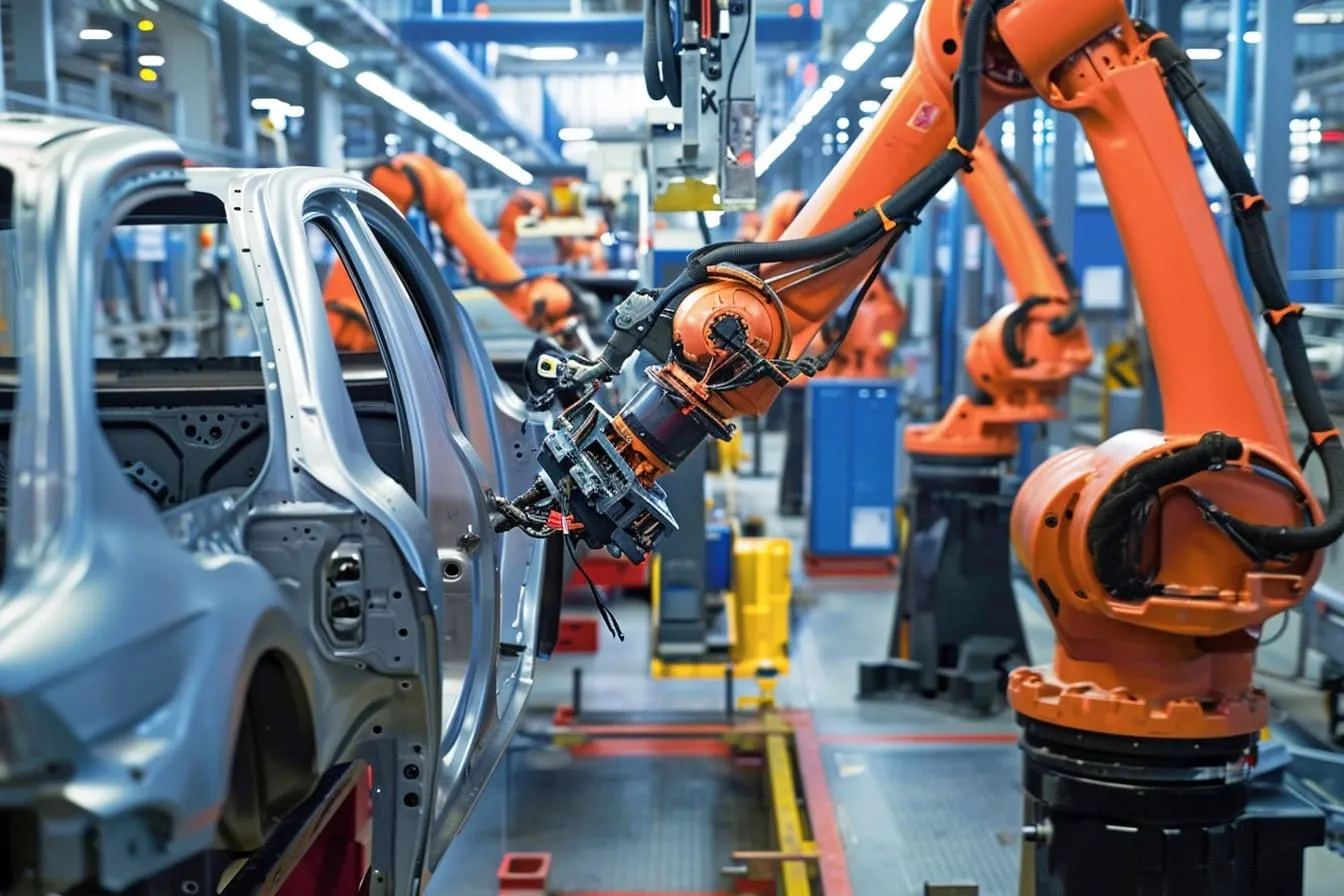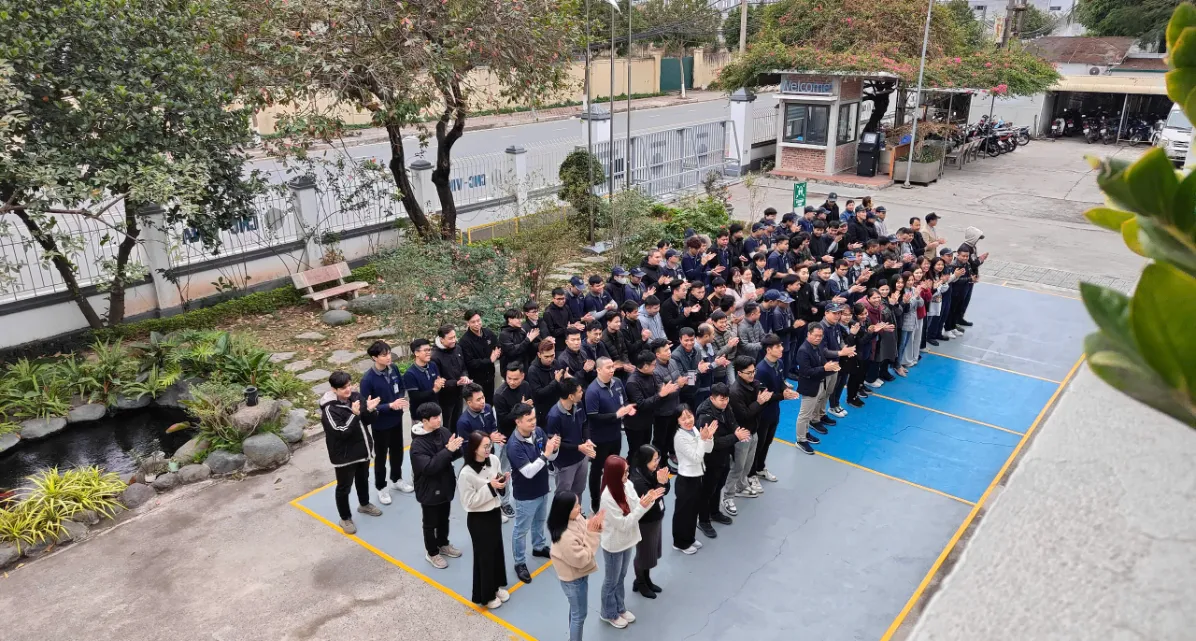Welding robots are now widely applied in almost all industries to replace human labor and perform complex welding operations. Especially in automotive production lines, investing in welding robots significantly enhances production efficiency, creates automated assembly lines, and ensures consistent product quality.
So, what are the applications of welding robots in automotive manufacturing, and what are their key characteristics? Let’s explore everything about welding robots with PWP Solution in the article below!
The emergence of welding robots is not only a tool to accelerate automation and reduce investment costs but also a solution to replace manual labor and enhance production quality for businesses.
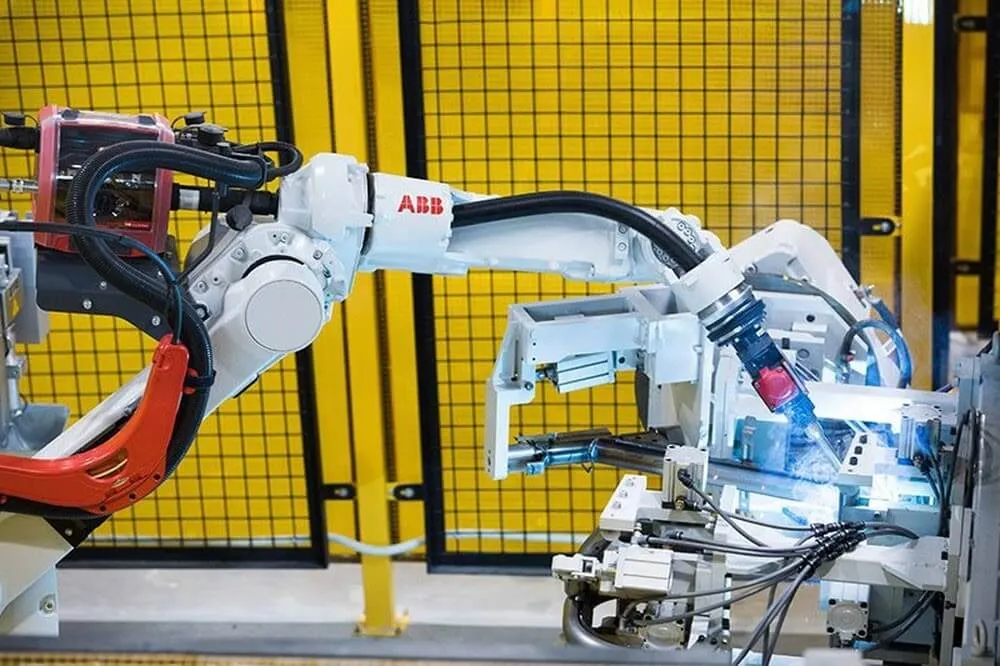
Basically, an industrial welding robot consists of the following components:
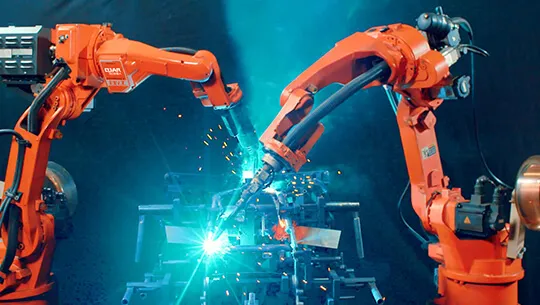
The welding robot arm is designed based on the principle of a human arm, with multiple-axis movement following linear motion. In hard-to-reach positions, the welding gun angle and movement angle can be adjusted for easy operation. The joints of the welding robot arm can be programmed and customized according to job requirements using a computer.
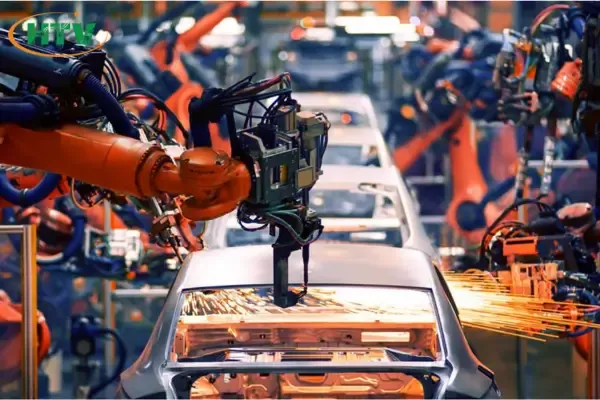
The welding power is drawn from a conversion source and controlled through the control center to generate sufficient welding power for the robot to carry out the welding process. This ensures optimal welding efficiency and safety throughout the process.
The welding gun is directly connected to the robot arm and powered through a conductive cable to generate and transfer heat during welding. The joint between the welding gun and the robot arm can be adjusted to rotate 360 degrees, depending on the programmed welding position.
The wire feeder is flexible in setting different wire feed speeds to meet the specific requirements of each production line. Automatic welding uses an interface between the controller, power source, and wire feeder.
The welding fixture is designed to hold the workpiece in place and secure the welding robot’s position. With high load-bearing capacity, it allows the welding gun to move freely to reach the weld joint.
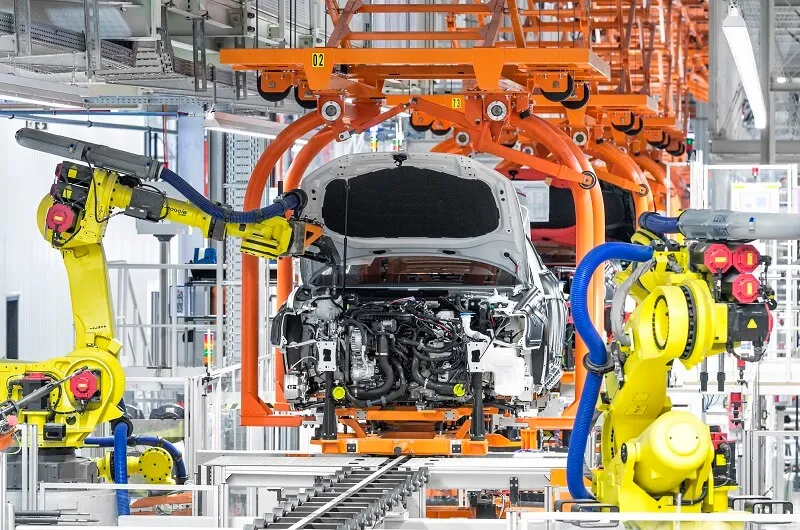
Weld joints must be cleaned to enhance precision and prevent misalignment during welding. Therefore, the welding gun cleaning system plays an important role in the welding robot’s structure.
Many businesses integrate welding robots into their production lines not only to solve labor shortages but also because of the following outstanding advantages:
Easy Operation: Operating the robot requires only one worker to manage and control it via a computer. Welding parameters and positions are stored for each weld, allowing workers to easily track progress and make adjustments in case of errors or product changes.
Investment Cost: While the initial investment cost for a welding robot may be high, considering the robot’s ability to work continuously 24/7 and its efficiency, it proves to be significantly more cost-effective in the long run compared to paying manual labor wages.
Precision: The robot can move flexibly and ensure that each welding position is precise and consistent. As a result, industries requiring high uniformity, such as automotive welding production lines, often prioritize welding robots.
Minimizing Workplace Accidents: Welding involves high temperatures and exposure to smoke, welding slag, and arc light, which can be harmful to workers’ health. Additionally, accidents can easily occur in case of mishaps, making welding robots a safer alternative.
Addressing Skilled Labor Shortages: Welding in automotive production requires highly skilled workers, often requiring four or more workers to operate a production line. However, with welding robots, a worker can be trained in less than 24 hours to manage the system and set up the machine.

The integration of welding robots into automotive production lines is becoming increasingly popular and delivers remarkable efficiency in improving business productivity. This not only solves labor challenges but also enhances weld quality and product precision. If you are interested in learning more about welding robots, contact PWP Solution for timely consultation on products suited to your business needs!
With an advanced and professional automated welding robot system, PWP Solution is a trusted provider of welding robots, chosen by many major clients. Beyond supplying robots, we assist in providing solutions and designing the most optimized production lines for your products while ensuring easy operation for workers. PWP Solution is committed to delivering welding robot systems with competitive pricing, high durability, and a reliable warranty policy.
